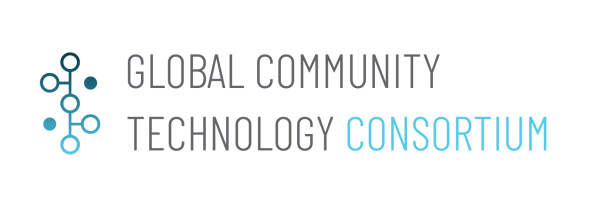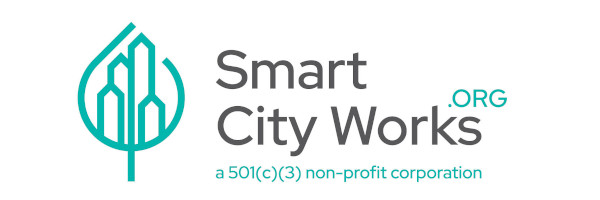SMART Emergency Medical and First Response Multiteam Systems: Difference between revisions
Jump to navigation
Jump to search
No edit summary |
No edit summary |
||
| (4 intermediate revisions by the same user not shown) | |||
| Line 1: | Line 1: | ||
{{ActionCluster | {{ActionCluster | ||
|image=SMART Emergency Medical.jpg | |||
| | |team=Fairfax Fire & Rescue, Inova Fairfax Hospital, George Mason University, Inflow Interactive, Newport News VA, ASC Consulting, USPHS | ||
|leader=Brenda Bannan, Hemant Purohit, Jeff Segall | |||
| team | |imagecaption=SMART Emergency Medical | ||
|municipalities=Fairfax County VA | |||
| leader | |status=Launched | ||
|description=SMART Emergency Medical Teams will help inter-disciplinary teams improve transition-of-care quality, promote situational awareness, and enhance the efficacy of simulation debriefing. | |||
| imagecaption | |||
| municipalities | |||
| status | |||
| description | |||
SMART Emergency Medical Teams will help inter-disciplinary teams improve transition-of-care quality, promote situational awareness, and enhance the efficacy of simulation debriefing. | |||
* Simulation-based Team Training in medical contexts | * Simulation-based Team Training in medical contexts | ||
* Patient hand-off or transitions between sub-teams | * Patient hand-off or transitions between sub-teams | ||
| Line 23: | Line 13: | ||
* Enhanced debrief –visualization/display/feedback | * Enhanced debrief –visualization/display/feedback | ||
* Collaborative reflection, situation awareness and experiential learning | * Collaborative reflection, situation awareness and experiential learning | ||
|challenges=* Instrumentation of IoT sensors for data capture, validation | |||
| challenges | |||
* Instrumentation of IoT sensors for data capture, validation | |||
* Synchronous integration of sensors, video, audio and medical simulation device data to usable instructor interface | * Synchronous integration of sensors, video, audio and medical simulation device data to usable instructor interface | ||
* Blended analytics/visualizations of proximity and performance data: Data extract-transform-load (ETL) from source systems | * Blended analytics/visualizations of proximity and performance data: Data extract-transform-load (ETL) from source systems | ||
|solutions=TBD | |||
| solutions | |requirements=* Build network of design and implementation expertise from diverse fields | ||
| requirements | |||
* Build network of design and implementation expertise from diverse fields | |||
* Define use case from different medical teams’ perspectives, surface and facilitate common goals: Successful 2015 GCC project/tools as baseline | * Define use case from different medical teams’ perspectives, surface and facilitate common goals: Successful 2015 GCC project/tools as baseline | ||
* Minimum viable product (MVP) performance support tools to enable provider capabilities - in context | * Minimum viable product (MVP) performance support tools to enable provider capabilities - in context | ||
* Data-driven learning designs to support evidence-based medicine | * Data-driven learning designs to support evidence-based medicine | ||
|kpi=* Improve systemic transition-of-care performance measures 10% via time-based analytics and video observation | |||
| kpi | |||
* Improve systemic transition-of-care performance measures 10% via time-based analytics and video observation | |||
* Promote individual and team-based situational awareness of EMS and ED teams | * Promote individual and team-based situational awareness of EMS and ED teams | ||
* Reduce preparation time 20% via instructor’s scenario app and improve efficacy and quality of medical team debriefings | * Reduce preparation time 20% via instructor’s scenario app and improve efficacy and quality of medical team debriefings | ||
|measurement=* Instructor’s design app and field checklist time-stamped | |||
| measurement | |||
* Instructor’s design app and field checklist time-stamped | |||
* Existing system metrics (EHR’, PCR, 911), plus IoT sensor and performance support data streams | * Existing system metrics (EHR’, PCR, 911), plus IoT sensor and performance support data streams | ||
* Data collection – time, location, behavior | * Data collection – time, location, behavior | ||
* Pre/post assessment of team debrief – without/with enhanced visualization of real time data | * Pre/post assessment of team debrief – without/with enhanced visualization of real time data | ||
* Augment with qualitative assessments of debriefing of medical intra-team and inter-team (cross) trainings | * Augment with qualitative assessments of debriefing of medical intra-team and inter-team (cross) trainings | ||
|standards=* xAPI (Experience API) experiential learning data standards from international Advanced Distributed Learning (ADL) specifications for REST API and data storage | |||
| standards | |||
* xAPI (Experience API) experiential learning data standards from international Advanced Distributed Learning (ADL) specifications for REST API and data storage | |||
* FHIR medical data interoperability standards from international HL7 specifications for REST API and data storage | * FHIR medical data interoperability standards from international HL7 specifications for REST API and data storage | ||
* Standardized emergency medical procedures are not unique to cities or regions. The SMART analytics model can be replicated across localities, and data gathered cost-effectively via a cloud-based SAAS system. | * Standardized emergency medical procedures are not unique to cities or regions. The SMART analytics model can be replicated across localities, and data gathered cost-effectively via a cloud-based SAAS system. | ||
* The system will initially rely on support from major partners and grant funding. As adoption grows, the system will develop its own member subscription model to enable ongoing development and support. | * The system will initially rely on support from major partners and grant funding. As adoption grows, the system will develop its own member subscription model to enable ongoing development and support. | ||
|cybersecurity=TBD | |||
|impacts=* Baseline for improving emergency medical system-wide performance | |||
| cybersecurity | |||
| impacts | |||
* Baseline for improving emergency medical system-wide performance | |||
* Directly impacts performance of mobile first responders, disaster recovery teams, hospital based teams | * Directly impacts performance of mobile first responders, disaster recovery teams, hospital based teams | ||
* Long-term benefits to citizens in distress, local and national governments, medical providers and payers | * Long-term benefits to citizens in distress, local and national governments, medical providers and payers | ||
* Advances in simulation debriefing may apply across multiple high-performance fields | * Advances in simulation debriefing may apply across multiple high-performance fields | ||
|demonstration=Phase I Pilot/Demonstration: | |||
| demonstration | |||
Phase I Pilot/Demonstration: | |||
# Intra-team focus | # Intra-team focus | ||
# Rapid prototype pilot for select use case(s) | # Rapid prototype pilot for select use case(s) | ||
| Line 82: | Line 49: | ||
# Intra- and Inter-team focus | # Intra- and Inter-team focus | ||
# Implement test deployment, measure, report | # Implement test deployment, measure, report | ||
|chapter=Education and Training | |||
|supercluster=Public Safety | |||
| supercluster | |year=2015, 2016, 2017 | ||
| year | |title=SMART Emergency Medical and First Response Multiteam Systems | ||
}} | }} | ||
Latest revision as of 05:17, January 25, 2023
| SMART Emergency Medical and First Response Multiteam Systems | |
|---|---|

| |
 SMART Emergency Medical | |
| Team Organizations | Fairfax Fire & Rescue Inova Fairfax Hospital George Mason University Inflow Interactive Newport News VA ASC Consulting USPHS |
| Team Leaders | Brenda Bannan Hemant Purohit Jeff Segall |
| Participating Municipalities | Fairfax County VA |
| Status | Launched |
| Document | None |
Description
SMART Emergency Medical Teams will help inter-disciplinary teams improve transition-of-care quality, promote situational awareness, and enhance the efficacy of simulation debriefing.
- Simulation-based Team Training in medical contexts
- Patient hand-off or transitions between sub-teams
- Interaction among interdisciplinary roles/team
- Wearable sensors
- Enhanced debrief –visualization/display/feedback
- Collaborative reflection, situation awareness and experiential learning
Challenges
- Instrumentation of IoT sensors for data capture, validation
- Synchronous integration of sensors, video, audio and medical simulation device data to usable instructor interface
- Blended analytics/visualizations of proximity and performance data: Data extract-transform-load (ETL) from source systems
Solutions
TBD
Major Requirements
- Build network of design and implementation expertise from diverse fields
- Define use case from different medical teams’ perspectives, surface and facilitate common goals: Successful 2015 GCC project/tools as baseline
- Minimum viable product (MVP) performance support tools to enable provider capabilities - in context
- Data-driven learning designs to support evidence-based medicine
Performance Targets
| Key Performance Indicators (KPIs) | Measurement Methods |
|---|---|
|
|
Standards, Replicability, Scalability, and Sustainability
- xAPI (Experience API) experiential learning data standards from international Advanced Distributed Learning (ADL) specifications for REST API and data storage
- FHIR medical data interoperability standards from international HL7 specifications for REST API and data storage
- Standardized emergency medical procedures are not unique to cities or regions. The SMART analytics model can be replicated across localities, and data gathered cost-effectively via a cloud-based SAAS system.
- The system will initially rely on support from major partners and grant funding. As adoption grows, the system will develop its own member subscription model to enable ongoing development and support.
Cybersecurity and Privacy
TBD
Impacts
- Baseline for improving emergency medical system-wide performance
- Directly impacts performance of mobile first responders, disaster recovery teams, hospital based teams
- Long-term benefits to citizens in distress, local and national governments, medical providers and payers
- Advances in simulation debriefing may apply across multiple high-performance fields
Demonstration/Deployment
Phase I Pilot/Demonstration:
- Intra-team focus
- Rapid prototype pilot for select use case(s)
- Refine metrics and data collection
- Final demonstration, with visual analytics
Phase II Deployment:
- Stakeholder approvals
- Select test cohort(s), simulation scenarios
- Intra- and Inter-team focus
- Implement test deployment, measure, report